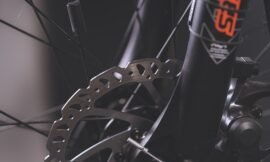Differences Between Manual and Automatic Vehicles.
It is a good idea to have a comprehensive grasp of the differences between automatic and manual automobiles before you go to the dealer to purchase your next vehicle, whether it is brand new or used.
This will allow you to make an informed decision. Both sorts of automobiles come with their share of benefits and drawbacks; conducting your research will assist you in selecting the model that is most suitable for your needs.
What are the key differences between manual and automatic transmissions in automobiles?
When you go shopping for a car, you will be faced with a number of choices, some of which include the body style, color, type of engine, and transmission. It is always in your best interest to do some research before making any significant choice, but this is particularly true when deciding the kind of gearbox to choose for your vehicle.
Are you curious about whether or not an automatic gearbox or a manual transmission would serve you better in the long run? Your usual driving patterns and the things that are important to you personally will guide your decision.
Both Automatic and Manual Transmissions Have Shifting
The way in which an automobile changes gears is the fundamental distinction that can be made between an automatic gearbox and a manual transmission.
When driving a vehicle with an automatic gearbox, the automobile determines when you need to shift gears and does it automatically for you. When driving a vehicle with a manual gearbox, it is up to the driver to change gears by utilizing the clutch pedal in conjunction with the gas pedal.
Regarding the Shifting
Shifting gears is an essential component of driving, and this may be accomplished either by the driver themselves or by the vehicle itself.
The number of revolutions per minute (RPM) of your engine goes up as you give it more gas or speed it up. There is a device on the dashboard that is referred to as the “tachometer,” which you have undoubtedly already noticed.
This ominous-looking red region, which displays the RPMs for your engine and is aptly referred to as the “red line,” may be seen on this gauge. You need to shift gears just before the needle on the tachometer reaches the region shown with the red line so that you don’t damage your engine. In an automatic gearbox, the automobile accomplishes this for you.
Automatic Transmissions Have a Number of Benefits
The experience of driving a vehicle with an automatic gearbox is seen as being the least complicated and most straightforward by the majority of people who drive on a regular basis and, in particular, by new drivers. There are a number of positive aspects that come along with driving an automated vehicle.
Having an Automatic Transmission Makes Driving Much Easier
It’s possible that driving with an automatic gearbox will be less stressful for you since it shifts gears for you automatically.
With an automatic gearbox, you are able to maintain your concentration on the road without having to be concerned about changing gears. Driving an automatic transmission vehicle might be less distracting for certain drivers.
It’s possible that an automatic transmission is the most sensible option for you, but it will depend on where you live. If you discover that you are regularly caught in rush hour traffic, it is evident that an automatic is the superior choice. To put it simply, operating a vehicle with a manual gearbox in heavy traffic is exhausting.
If you reside in a location that has steep slopes, inclines, and twisting roads, an automatic transmission vehicle will be simpler to operate.
Driving a stick shift vehicle, which has more “moving parts” to coordinate and might take longer, is more difficult to learn how to do for novice drivers than driving an automated vehicle, which is considerably simpler to learn how to do.
The vast majority of manual automobiles, although not all of them, lack the ability to use cruise control, which is an attractive function for motorists who are required to spend extended periods of time behind the wheel.
Variations in Speed Occurring With an Automatic Transmission
In more recent vehicles equipped with automatic transmissions, the automobile will swap gears for you far more quickly than you could do so manually. This may be handy if you need to accelerate fast, such as when you are merging into a motorway or any other kind of highway.
A Lower Probability of Being Stalled in Traffic
Another benefit of having an automatic gearbox is that there is less of a chance that your vehicle would stall when you are driving through traffic, such as when you are stopped at a stop sign or a traffic light. It is possible for an automated automobile to develop problems that need maintenance, but the likelihood of this happening is lower than it is with a manual car.
The Availability of Automobiles with Automatic Transmission
Manual gearboxes are becoming more difficult to come by, especially in the market for automobiles in the United States. In 2019, automatic gearboxes were the sole option for purchase on eighty percent of automobile models.
The Drawbacks of Employing an Automatic Transmission
Even while there are a lot of benefits to having an automated automobile, there are also some drawbacks to consider:
When compared to their manual equivalents, they are almost always more costly both to purchase and to maintain.
If you only know how to drive an automatic gearbox, it could be difficult for you to hire a car in a nation where manual transmissions are the norm or the only choice available for most vehicles.
They may lead to less emphasis on driving, which increases the risk of getting into an accident when compared to driving a stick shift.
They may have a higher cost in terms of fuel efficiency, however, this may vary depending on the vehicle.
The Many Benefits of Using a Manual Transmission
There are ardent supporters of manual gearboxes, just as there are owners of automatic transmissions who like their vehicles. Despite the fact that automobiles with manual transmissions might be trickier to operate, there are a number of significant benefits that come along with having a vehicle with this kind of gearbox.
The Advantages of a Manual Transmission from a Financial Perspective
Owning a vehicle with a manual gearbox is, on average, less expensive than owning a car with an automatic transmission due to a variety of different considerations.
Although automobiles with manual transmissions have the potential to earn greater gas economy, this advantage is becoming less common as technology for automated cars continues to advance.
Because the driver is in charge of the vehicle’s RPMs, the vehicle revs the engine less and consumes less petrol as a result. The difference in gas economy is often between three and five miles per gallon, and drivers may typically save anywhere from five to fifteen percent on gasoline costs by making these kinds of adjustments.
However, this varies depending on the vehicle, and there are some more recent models in which the automatic version gets greater gas economy than the manual version.
In most cases, having your automobile repaired if it has a manual gearbox can save you money. Since automatics are comprised of more complex technology, their maintenance and repair costs are often higher.
However, depending on how you drive, at some time in the future you may need to have the clutch of your vehicle replaced.
When purchasing a brand-new vehicle, a vehicle with a manual gearbox is often the more affordable alternative. There is a potential cost savings of several hundred dollars associated with the purchasing of a vehicle that has a manual transmission.
With a manual transmission, you’ll have more control over your vehicle and its handling.
When you drive a car with a manual gearbox, you have greater control over the vehicle. By shifting down into a lower gear and allowing the engine to assist in slowing the vehicle, you will be able to reduce your speed with less reliance on the brakes.
Although with expertise you may reduce the amount of wear and tear on your brakes and tires,
Both the Transmission and the Speed Are Manual
Manual transmissions are often preferred by racing car drivers because they provide the driver more control over the vehicle. This is one of the reasons why automatic gearboxes are seldom utilized in race cars.
The fact that manual automobiles are often lighter than automatic cars is another element that might contribute to an increase in the vehicle’s top speed.
Better Protected From Theft
Because automatic automobiles are the most common kind driven in the United States, there is a school of thought that maintains the belief that car thieves are less likely to target manual transmission vehicles.
Of course, if you own a specialist model with a high market value, this won’t be the case, but your normal “everyday” manual automobile may not be particularly valuable if stolen.
Disadvantages of Manual Transmissions
When opposed to owning an automated automobile, having a manual car comes with a few disadvantages.
In a market that is increasingly dominated by automatic automobiles, such as the one in the United States, it is becoming more difficult to purchase a car with a manual transmission.
They demand a higher level of focus as well as better hand-to-foot coordination and are more difficult to learn how to drive.
They may not be the greatest option for rookie drivers or drivers who feel physically weary quicker, such as elderly folks or those who need to drive for long hours for work. Also, they may not be the best option for persons who have to drive for a long time for work.
They will have a lower resale value due to the fact that fewer people will know how to operate a manual automobile and more people will be unwilling to put in the effort to learn.
Is it Safer to Drive an Automatic or a Manual Car?
There is no concrete evidence to suggest that one kind of automobile is safer than another. The individual driver is in the best position to determine the level of safety.
If driving causes you stress, such as when you are a novice driver or when you are driving in heavy stop-and-go traffic, an automatic transmission vehicle may be safer for you to drive since it is simpler to operate.
On the other side, a driver of a car with a manual gearbox may claim that their vehicle is safer since they have a greater degree of control over it; however, this needs a significant amount of training and expertise.
If you are an excellent manual driver, you may be able to manage challenging road conditions or weather conditions better than someone who drives an automatic vehicle.
When opposed to a manual transmission, an automatic transmission requires less concentration from the driver, which may make it less safe. This may lead to inattentive conduct, which can further increase the risk of accidents.
Accidents may occur when drivers of cars with automatic transmissions use one hand for other activities in the vehicle, such as gazing at a mobile phone or eating, both of which need full attention.
Keep Your Options Open
It is beneficial to have an understanding of the primary distinctions that exist between automatic and manual transmissions in automobiles; nevertheless, in the end, your choice of transmission will usually be determined by your own personal taste.
Both kinds of vehicles will get you to your destination, and all it takes to become proficient in driving a manual automobile is a little bit of experience behind the wheel.
Even if you go ahead and get an automatic transmission vehicle, it is still a good idea to become proficient in driving a manual transmission vehicle. The ability to operate a manual transmission is a valuable life skill that may be of assistance in a variety of challenging situations.
What To Wear When Mountain Biking?
There Are 2 Main Pedal Options For Mountain Bikes.






